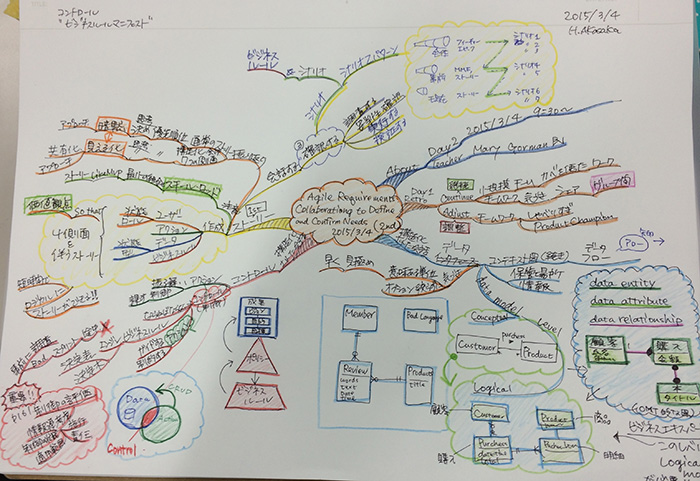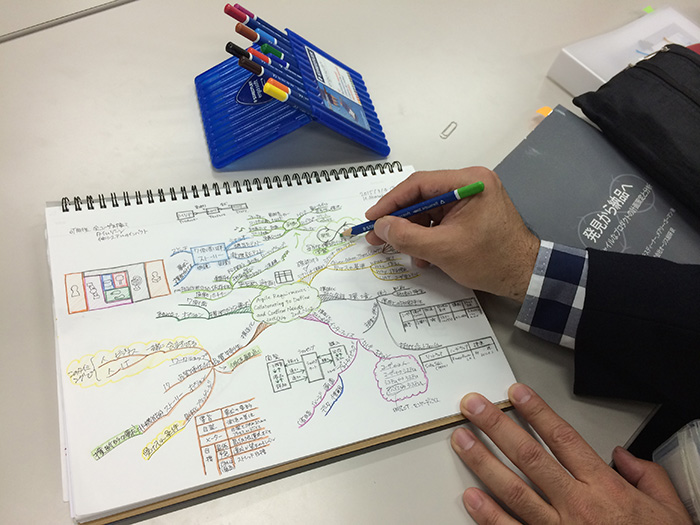Amplify Learning with Mind Maps
by Mary Gorman
I’ve long been an advocate for visual learning and discovery tools. Models, maps, prototypes, along with the use of symbols and color, aid in understanding complex ideas. So what I saw in a recent Agile Requirements training class I taught in Tokyo, Japan—hosted by our training partner OGIS-RI—took my love of visuals to a new level. One attendee, Hidehiko Akasaka, was especially engaged. To my delight, he was using mind maps to help him organize and amplify his learning!

I use mind maps for a variety of topics. For example, recently I “wrote” a book review using a mind map. Yet, for me, Akasaka-san takes mind maps to a new level!
His colleagues shared that Akasaka-san has a reputation for his quick, clear, and creative way of organizing various concepts. So they were not surprised that while he was actively and energetically participating in all of the class activities, Akasaka-san was also creating a series of detailed mind maps. He visualized many of the Discover To Deliver™ practices, exercise results, and examples of the tools and techniques used during the training class.

Not only did Akasaka-san combine Japanese with English text, he also creatively and colorfully added snippets of the class’s requirements models and a number of the visual language elements from EBG’s Discover To Deliver book. In the photo, to the right of Akasaka-san’s drawing hand you can see the Japanese version of Discover to Deliver he was using as a resource. (See our February 6, 2015 blog posting for more details on this translation.)
Akasaka-san explained that he uses mind maps during meetings and training to focus and organize key points. Afterwards the mind maps serve as reminders and references. Inspired by Akasaka-san I now encourage attendees in our training sessions to draw their own mind maps to deepen and personalize their learning. And of equal value, to use their mind maps when applying the learnings back at their jobs.
What’s your experience with mind maps or other visual learning aids? We’d love to hear from you.

Thanks for this – Interesting (and colourful!) article – this does indeed work brilliantly for a visual learner but not so well if someone’s preference is for audio or kinaesthetic learning. Personally (audio with kinaesthetic) I like using mindmaps as a method of formulating a to do list rather than as a learning tool.
I have been mind mapping for over 20 years. I love the technique because it allows me to be creative without necessarily being an artist. This article has served as a gentle reminder of how powerful this technique is. Just yesterday I reviewed a map that I created 7 years ago regarding a personal business dispute, and the map allowed me to quickly recall the essence of the issue from one single sheet of paper – though the letter that resulted from the map spanned multiple pages. Thank you, thank you, thank you for the knock on the side of the head to continue using this tool !!!
Fabulous! Thanks for sharing your story Richard!
Great point, Jaqueline. People do have different learning preferences and combinations (e.g. audio + kinesthetic; visual + kinesthetic and so on).
I often use mindmaps to organize my thinking. For example, I use them plan a presentation and have used them to work out my books’ outline and structure.
yea mindmaps!